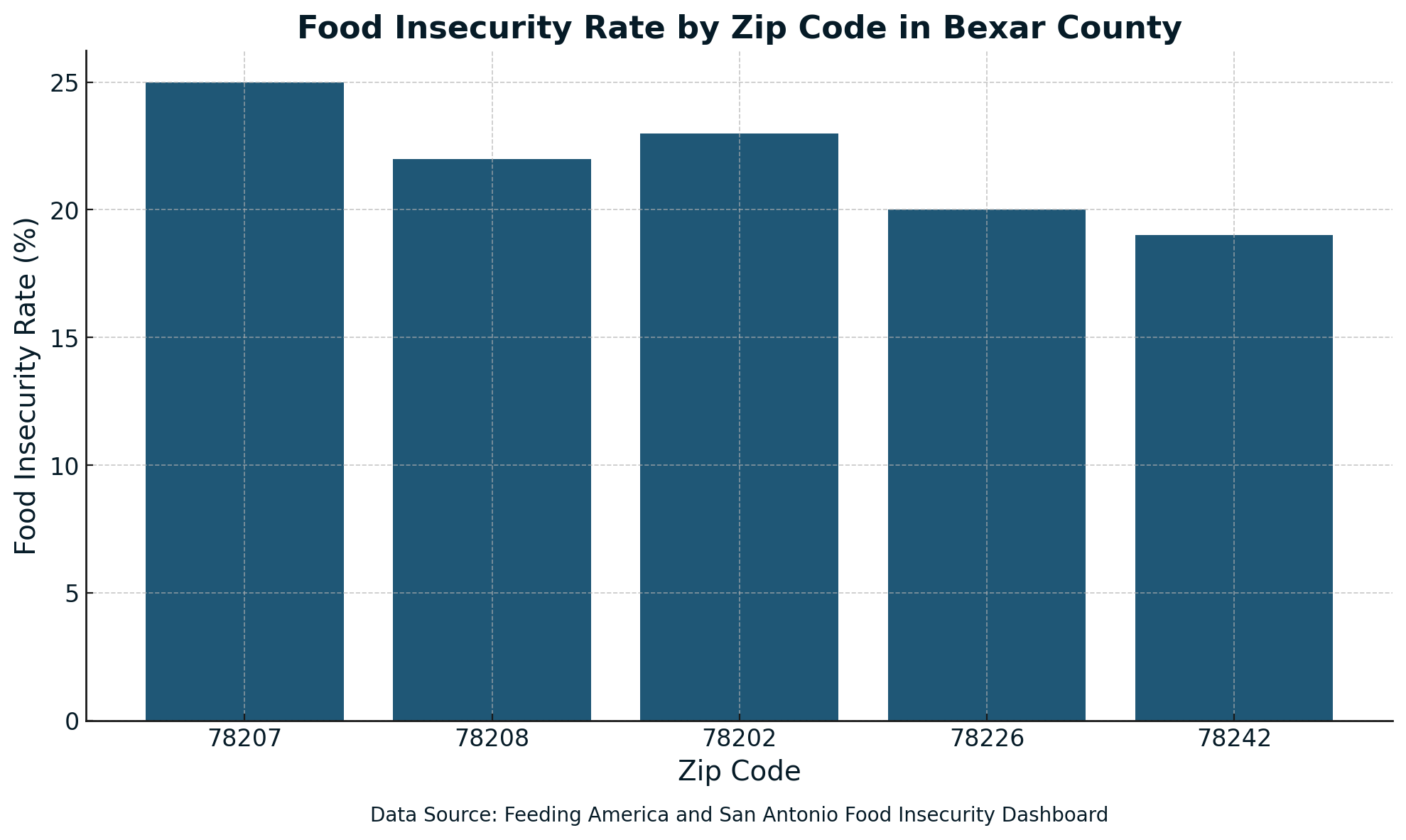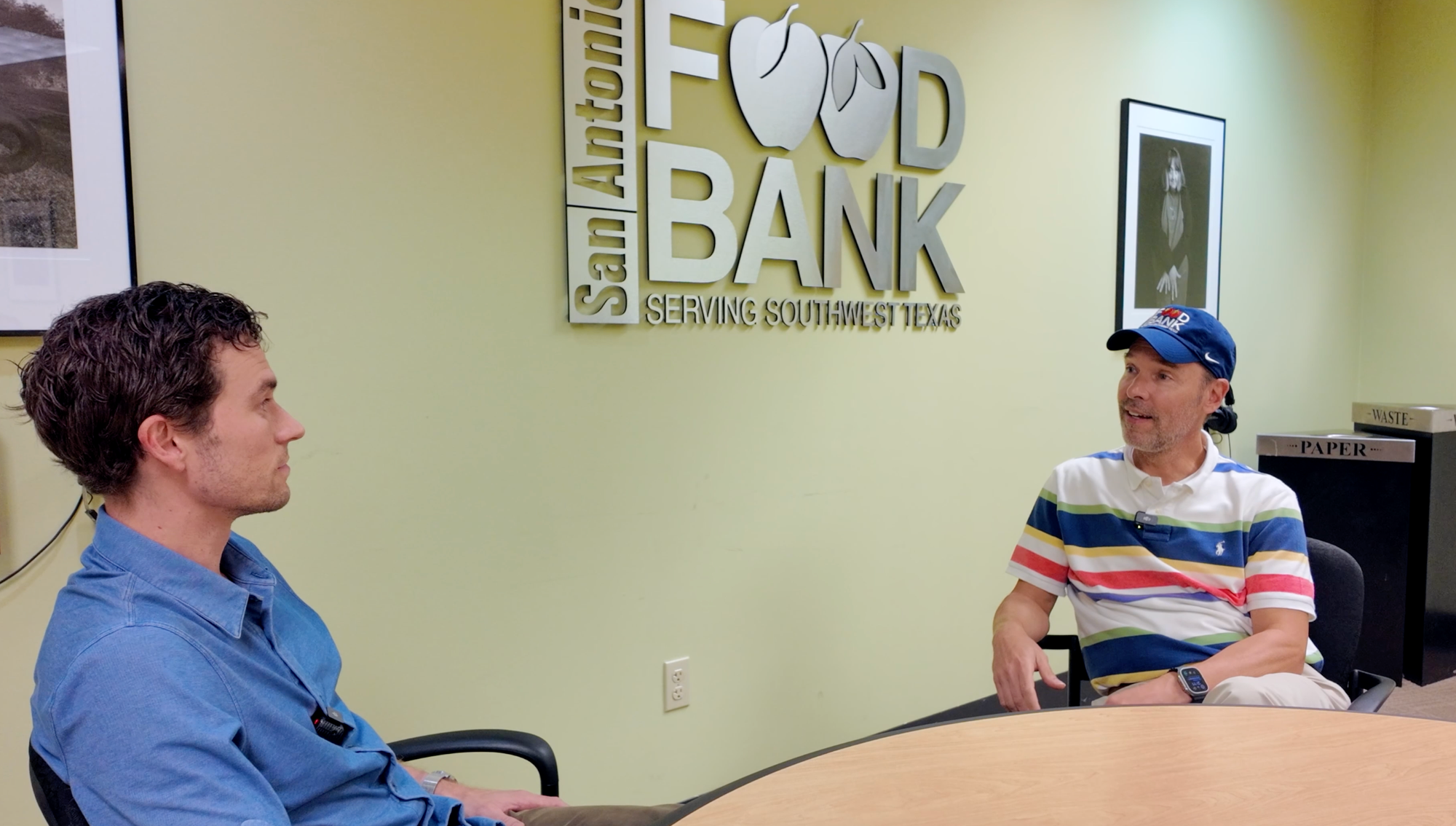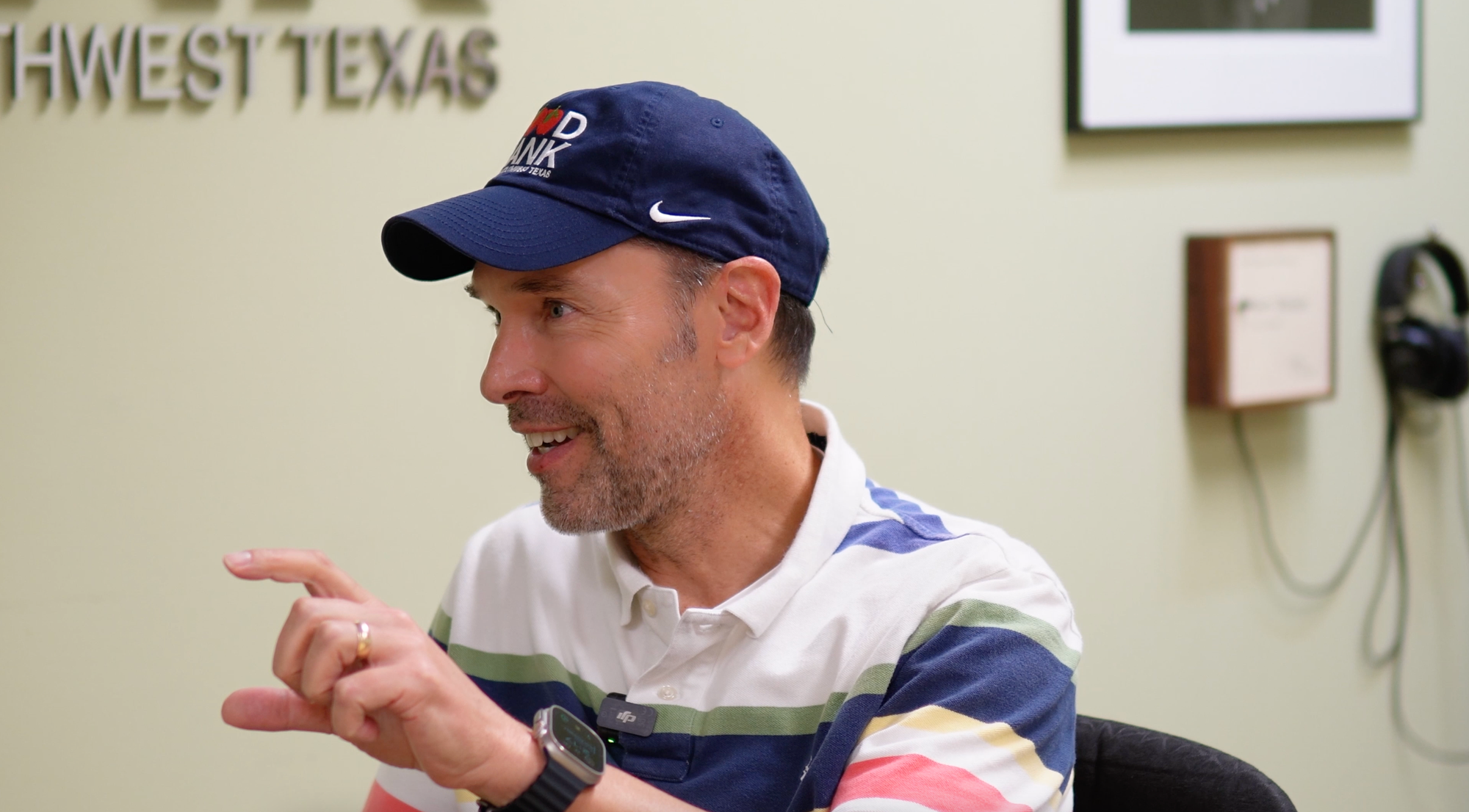From food rescue to addressing systemic poverty, the San Antonio Food Bank works to reduce hunger and build long-term solutions for a stronger community.
A Growing Crisis, A Committed Response
The line of cars stretched for miles outside the San Antonio Food Bank during the height of the pandemic was a stark reminder of a crisis affecting thousands. Today, that demand has not waned.
Serving more than 105,000 people each week, the San Antonio Food Bank is more than just a distributor of food—it’s a vital part of the region’s response to hunger and poverty.
Eric Cooper, CEO of the San Antonio Food Bank, captures the challenge succinctly: “Hunger really, is a policy choice. If our community can gain the conscience and compassion, we could see a day when hunger doesn’t exist.”
In San Antonio, where nearly 18% of the population lives in poverty—well above the national average—these words resonate deeply.
Poverty and Food Insecurity in San Antonio
San Antonio’s poverty rate has remained stubbornly high, hovering at 17.7% for nearly a decade.
This translates to over 250,000 residents living below the federal poverty line, including more than half under the age of 18. Compounding the issue, San Antonio is one of the most economically segregated cities in the U.S., with stark disparities between neighborhoods like the more affluent North Side versus areas like the West Side, where poverty rates soar above 25%.
Food insecurity mirrors these inequalities. The Food Bank’s service area reports rates as high as 17.4%, meaning families in many communities don’t know where their next meal will come from. In some neighborhoods, such as the 78207 zip code, more than a quarter of the population struggles with food insecurity.

The San Antonio Food Bank: Addressing Hunger Today and Tomorrow
At the heart of the San Antonio Food Bank’s operations is a twofold mission: to meet immediate needs while addressing the systemic issues that cause hunger in the first place.
This dual approach allows the Food Bank to provide critical relief in the short term, while also creating pathways for long-term stability and self-sufficiency for the families it serves. Whether through food distribution, workforce training, or collaborative partnerships, the organization is committed to tackling hunger from every angle.
Evidence of Impact: Measuring Success
The Food Bank’s impact is evident in the numbers. In 2023 alone, it distributed over 72 million pounds of food, equivalent to millions of meals served across its service area. Rescued food, from grocery stores, farms, and restaurants accounts for a significant portion of the supply. This food, which might otherwise go to waste, is redirected to families in need through a network of hundreds of partner agencies. The approach is a model of efficiency and sustainability, addressing both hunger and food waste in the region.
Its workforce training programs, including culinary and warehouse logistics tracks, empower individuals with skills to achieve economic stability. In 2023, The Food Bank’s graduated 105 individuals from its culinary and warehouse tracks. These graduates achieved an impressive average wage of $20 per hour, illustrating the program’s effectiveness in fostering economic mobility.
In addition to job training, the Food Bank offers programs in financial literacy and nutrition education, equipping families with tools to build healthier and more secure futures. “Our goal isn’t just to feed people—it’s to help them thrive,” explains CEO Eric Cooper.
Qualitative stories add depth to these statistics. “Right now, I have nothing,” Lisette Medina shared with The San Antonio Report during a visit to the Food Bank in early 2024. A mother of five living on the city’s East Side, Medina relies on a patchwork of resources, including SNAP benefits and assistance from the Food Bank, to keep her family afloat. Rising rent, escalating food costs, and limited job opportunities have pushed her to the brink. “I’m doing everything I can, but it’s never enough.”
Medina’s story is far from unique. It’s a reflection of the broader struggle faced by thousands of families across San Antonio, where economic disparities and systemic barriers perpetuate cycles of poverty. Addressing food insecurity requires more than meals; it demands a commitment to tackling the structural inequities that leave families like Medina’s vulnerable.
The Fight Against Hunger: Obstacles and Opportunities
Despite the San Antonio Food Bank’s impressive achievements—serving approximately 800,000 individuals and distributing 72 million pounds of food in 2023—these numbers reveal a deeper problem.
While the scale of the Food Bank’s operations is vital in addressing immediate needs, such record demand underscores a troubling paradox: success, in this case, is both a triumph and a symptom of systemic failure.
“Hunger shouldn’t be an inevitable part of life in our community,” says Eric Cooper, CEO of the Food Bank. “Our goal is to work ourselves out of a job.” High demand at the Food Bank signals that too many families remain stuck in cycles of poverty, relying on charity to fill gaps left by inadequate wages, housing instability, and limited access to public benefits.
Inflation and the end of pandemic-era benefits have exacerbated the issue, placing additional strain on families and increasing reliance on food assistance.
Last year, the Food Bank facilitated 166,209 federal benefit applications, helping families access resources like SNAP. However, many eligible individuals still fall through the cracks due to systemic barriers or lack of awareness.
“The Food Bank shouldn’t be the safety net for low wages,” Cooper adds. “We need systems that make it unnecessary for families to need us.” Addressing food insecurity requires policies that go beyond temporary relief, tackling issues like income inequality, affordable housing, and access to healthcare.
While the Food Bank remains a vital lifeline, long-term solutions lie in systemic change that eliminates the root causes of hunger.


A Unified Effort to Combat Food Insecurity
The San Antonio Food Bank’s work is strengthened by its alignment with broader city initiatives aimed at reducing food insecurity and poverty. Projects like the SACRD housing stability portal and the Health Equity Workgroup’s strategies for stable housing and improved food access exemplify a united front against systemic inequities. Partnerships with businesses, local governments, and nonprofits are central to these efforts and must continue to evolve to meet growing needs.
For example the Food Bank’s partnership with the Metropolitan Health District, is a cornerstone of its strategy to address disparities in food access. Together, they have launched initiatives to identify and address food deserts—areas where residents lack access to affordable, nutritious food. These targeted interventions include setting up mobile food pantries in underserved neighborhoods, connecting families to public benefits like SNAP, and offering nutrition education programs tailored to community needs.
This collaboration amplifies the Food Bank’s impact by combining its logistical expertise with the Metropolitan Health District’s focus on public health and equity.
“Hunger and health are deeply intertwined,” explains Eric Cooper, CEO of the Food Bank. “By addressing food insecurity, we’re also tackling broader health disparities that disproportionately affect low-income communities.”
Through these joint efforts, the Food Bank is helping to ensure that food access becomes part of a larger conversation about health equity and economic stability in San Antonio. This partnership serves as a model for how organizations can work together to create systemic solutions that go beyond immediate relief.
However, while the San Antonio Food Bank is a cornerstone of the community’s response to hunger, lasting change will require a collective effort from all San Antonians. From advocating for policies that address income inequality to supporting local organizations, every resident has a role to play in building a hunger-free San Antonio.
Eric Cooper remains optimistic: “We have the tools and the knowledge to solve hunger. What we need is the will.” For a city defined by its resilience and community spirit, the path forward lies in turning that will into action.


